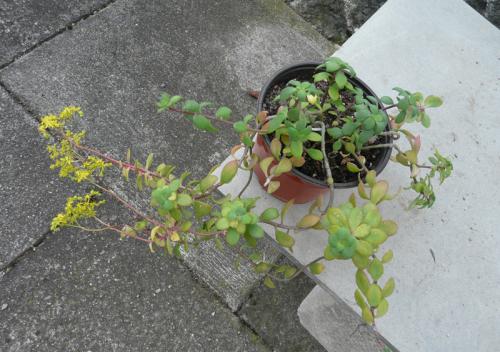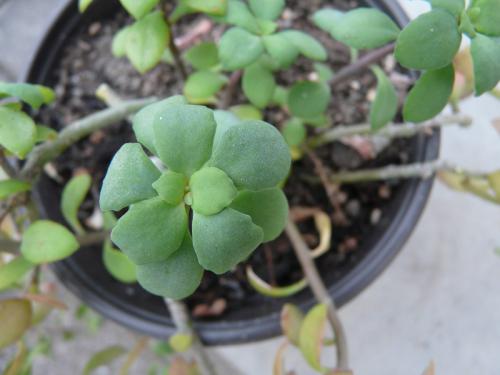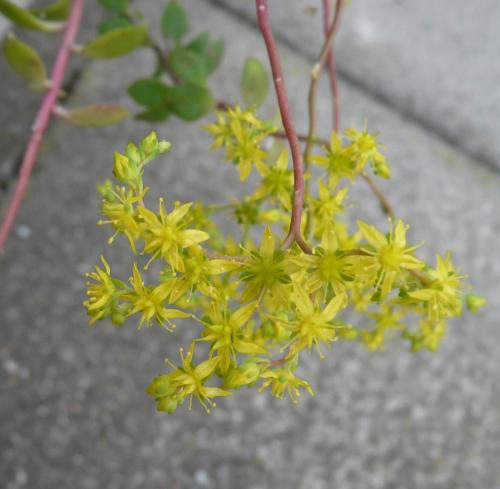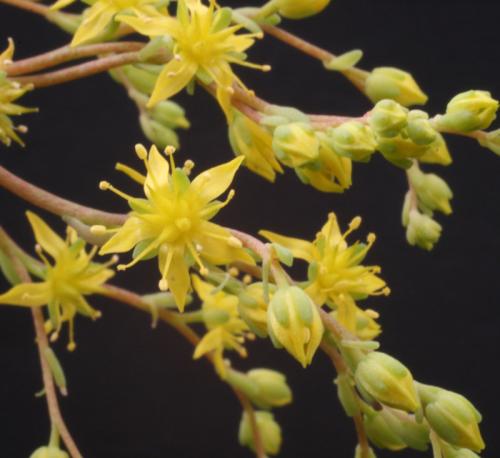HULTENII Fröderström, 1936
Distribution : Mexico (Puebla), shady slopes, ± 1300 m.
Description (according to 't Hart & Bleij in IHSP, 2003)
Glabrous perennial herbs with many slender sterile stems, suberect, densely leafy.
Leaves alternate, obovate to orbicular, rounded, shortly petiolate, shortly spurred, 6 - 35 mm.
Inflorescences : Flowering branches procumbent or pendent, inflorescences lax few-flowered corymbs, bracts oblanceolate, obtuse, ± 3 mm, pedicels 2 - 6 mm.
FIowers 5-to 6-merous, sepals broadly sessile, basally connate, slightly unequal, linear-lanceolate, obtuse, 2,5 – 3,5 mm, suberect, petals nearly free to the base, subovate, obtuse, shortly mucronate, pale yellow, ± 5 mm, suberect.
Cytology : 2n = 52.
Ray Stephenson (Sedum, Cultivated Stonecrops, 1994, p 224) :
Not a typical member of this [Pachysedum] group , Sedum hultenii has thin leaves clustered in terminal rosettes on 12 cm (5 in) long, bare stems. The chromosome count of n = 26, too, is anomalous. Uhl (1978) recorded that this is the only member of Pachysedum group that does not readily hybridize with other species in this group - although it hybridizes with Sedum cremnophila [= Cremnophila nutans] - so perhaps its inclusion in Pachysedum group is questionable. Lax, open inflorescences are exceptionally long, often three times as long as stems, very reminiscent of Aichryson species, and carry dozens of small pale yellow flowers on slender pedicels. The species is quite rare in cultivation.
Habitat : This stonecrop has an extensive range throughout Hidalgo into Puebla on the Trans-Mexican Volcanic Belt in damp, shady vertical sites.
Main points of distinction : Glabrous, not very succulent, medium-green leaves, with short spurs, in terminal rosettes, on short stems, and exceptionally long inflorescences clearly separate this species. Pedicels are long, as are the beaks of carpels. Sepals are united at the base and only slightly uneven. Cytologically the species is distinct.
Variation : The large range of this species suggests that variation should be expected, but chromosome counts have been constant. Flowers can sometimes be 6-partite. Grown in shade, leaves can be dark green.
Horticulture : This is a super plant for sunny windowsills, if there is room for the huge, lax inflorescences to tumble.
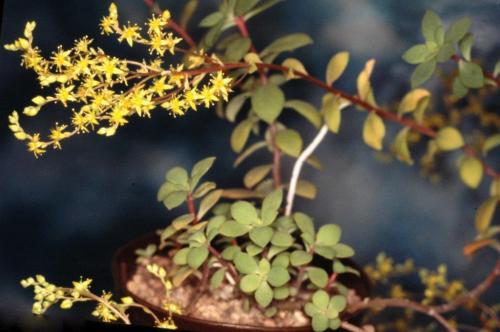
Photo Ray Stephenson
